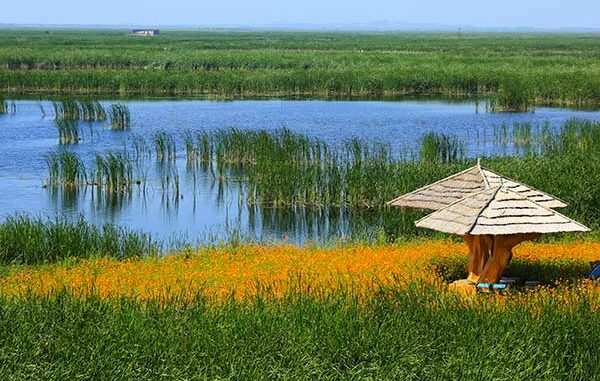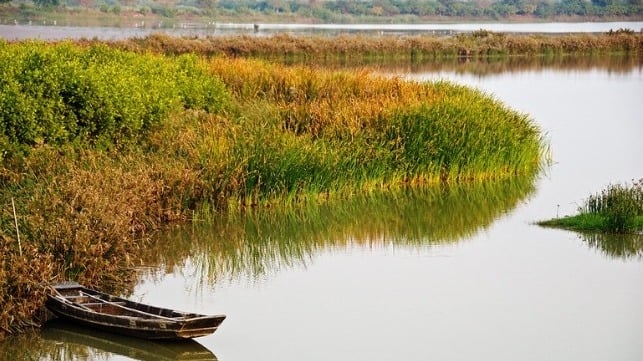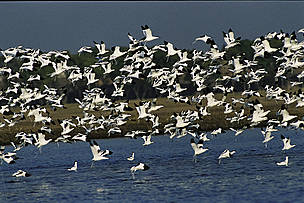
In November 2022, Chinese President Xi Jinping spoke at the Opening Ceremony of the 14th Meeting of the Conference of the Contracting Parties to the Ramsar Convention on Wetlands. He spoke of the historic achievements made in wetlands conservation in China.
Xi Jinping
“We have increased the area of wetlands to 56.35 million hectares, put in place a protection system, and enacted a Wetlands Conservation Law. Wetlands have become an integral part of many Chinese cities like Wuhan, making the cities notably more livable. China will pursue a modernization of harmony between humanity and nature, and promote high-quality development in the wetlands conservation cause.”
“China has recently drawn up a layout plan of national parks. Under the plan, China will designate a number of national parks, accounting for about 10 percent of the country’s land area. About 11 million hectares of wetlands will be incorporated in the national park system, with a focus on developing wetland national parks including the Three-River-Source National Park, the Qinghai Lake National Park, the Ruoergai National Park, the Yellow River Estuary National Park, the Liao River Estuary National Park and the Songnen Plain Crane Homeland National Park. A national wetlands conservation plan and major conservation projects will be implemented. China will promote international exchanges and cooperation to protect the four bird migration routes passing China and to build an international mangrove center in Shenzhen.”
See: https://chinadialogue.net/en/nature/how-has-the-ramsar-convention-shaped-chinas-wetland-protection/
On the World Wide Fund for Nature (WWF) program supporting wetlands protection along Yangtze River and the implementation of the National Wetland Conservation Action Plan for China:
Overview
Unfortunately, wetlands – lakes, rivers, marshes, and coasts – are among the most heavily degraded of all ecological systems worldwide. Half of them may have been destroyed in the past 100 years alone. Wetlands are not only essential for ecological functions such as maintaining biodiversity, controlling floods, and the removal of pollutants, but also serve necessary economic functions in rice and fish production, transport, and hydropower energy.
With one-fifth of the world’s population, conservation of wetlands in China is crucial. China is ranked fourth in the world in wetland surface (65.9 million ha – 10% of the world’s wetland areas), yet it ranks 109th in the world in fresh water per capita. It is host to some of East Asia’s most important wetlands such as Poyang Lake and Asia’s longest river, the Yangtze, and is the source country of major rivers such as the Mekong. However, under the pressure of population growth and economic development of the last 40 years, some 13% of China’s lakes have disappeared, half of China’s coastal wetlands have been lost to reclamation and 50% of China’s cities have no drinking water that meet acceptable hygiene standards.
Since the 1970s, when China’s first wetland nature reserve was created, the number of wetland nature reserves has grown to 262, with an area of 16 million ha protected. China joined the International Convention on Wetlands on July 31, 1992 and designated seven wetland sites as the “Wetlands of International Importance” (known as Ramsar sites). In October 2000, the Ministry of Forestry, the governmental unit appointed to implement the Convention, together with 17 other government ministries and academic institutions, completed a National Wetland Conservation Action Plan for China. The Action Plan serves as a guideline for the conservation and wise use of wetlands in the future.

Objective
To protect and effectively manage key wetland sites through the implementation of the National Wetland Conservation Action Plan for China and the designation of additional wetland sites. With the attainment of its original goal of adding 14 new wetland sites, WWF aims to bring 50 new sites (totaling two million ha) in Tibet and the mountainous regions of western China for protection under the Ramsar Convention. The conservation of wetlands in Tibet will benefit the ecosystems of seven major rivers: the Yellow River, the Yangtze, the Mekong, the Salween, the Indus, the Yarlung Tsangpo, which downstream becomes the Brahmaputra, and the Honghe (to Vietnam).
Current Status
Following China’s signing of the International Convention on Wetlands, WWF provided continuous technical and financial support to the Ministry of Forestry (now State Forestry Administration) during the process of drafting the National Wetland Conservation Action Plan for China. WWF has been supporting the implementation of the National Wetland Conservation Action Plan for China since it was completed.

Water birds in the Yangtze River basin.
In order to promote wetland conservation, WWF has collaborated with the Office of Wetland Conservation and Management of State Forestry Administration for many years, jointly promoting wetland conservation pilot projects and the wetlands conservation network initiative in the Central and Lower Yangtze.
A Wetland conservation network has been established across the whole Yangtze River basin as a result of a WWF partnership with HSBC, Coca-Cola and the State Forestry Administration.In order to promote public awareness and capacity building, WWF and SFA have also collaborated to organize the Wetland Ambassador Action program, World Wetland Day celebrations, Mipu wetland training in Hong Kong and jointly promoted conservation, management and the wise use of wetland ecosystems.
http://en.wwfchina.org/…/freshwater/wetland_conservation/
https://en.wwfchina.org/en/what_we_do/freshwater/wetland_conservation/
